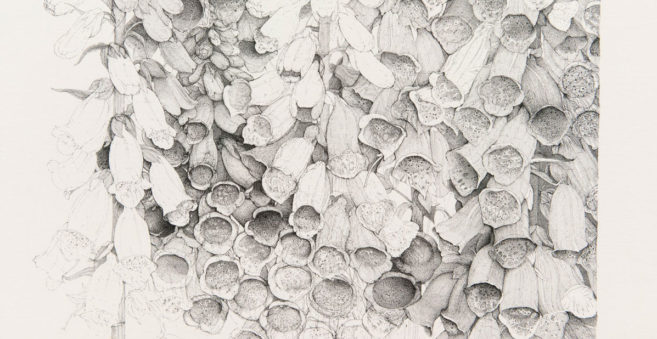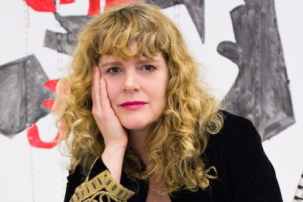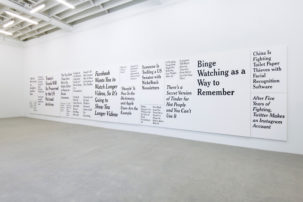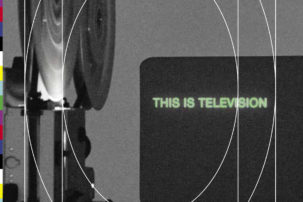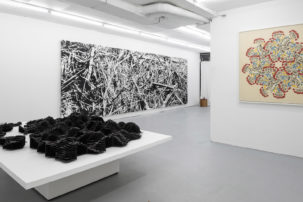Tucked away in a corner of Vancouver’s Catriona Jeffries, an accordion screen shielded a glass goblet and a sculpture of a brain staged on a retro black leather stool. A metal chain linked through the brain’s hemispheres anchored it to the floor. Judy Radul’s signature theatricality was evident—though restrained—in cheeky, stage-set cameos like this in her latest exhibition, “Words No Pictures Pictures No Words.”
The artworks on view played with sensory inputs through various mediations—abstracted words and images akin to the brain, visual reflections, live-feed video, mechanical sounds—exposing aspects of perception and explorations of the mind as both actor and agent, a distillation rendered both dramatic and biological by Radul.
A Dan Graham–esque tinted glass divider titled Connector Divider (Hawks, Sparrows, Pigeons, Doves, Ducks, Eagles) (2018) spanned the opening of the gallery. Interspersed among these tall, folded panels was a collection of kitsch ceramic birds perched on poles. The translucent glass operated as both window and mirror, reflecting birds and observers back onto themselves, their impressions overlapping and trapped in a metaphor of migration.
Another large sculptural work, Reading Pavilion for Cover to Cover (2018), occupied the centre of the gallery with two metallic-veneered seats positioned across from one another and separated by a panel of semi-reflective glass. Positioned on either side of this glass barrier were copies of Michael Snow’s 1975 artist book Cover to Cover joined by a chain through a hole in the glass. As viewers sat and flipped through the pages they activated the work, as if two halves of the brain were simultaneously explored and exhibited in the reflections. There were moments of performative collage, mimicry, discrepancy and glances; eyes met in an intimate exchange. Holiday postcards—one of a sunset, the other a mountainous road—were in the distance for each sitter, as if disparate visual souvenirs or memories.
Similarly, Radul references biology, psychology and performativity in Man’s Hands (Words No Pictures Pictures No Words) (2018) by mechanizing the simplicity of turning a page. Two programmed kinetic poles draped with strips of fabric printed with texts and images flank a wooden table. On the table were two artist magazines—one of texts, the other images—featuring hand-transplant narratives, quotes from Maurice Merleau-Ponty and pictures from a psychological research database. The robotic arms of custom page-turning machines activated the work and also composed its soundscape. This complex circuit was staged in front of a purple velvet theatre curtain, behind which a flimsy Styrofoam screen presented a live-feed projection of abstractions from the turning pages. As a makeshift theatre, furnished with backless office chairs, this space felt like an unresolved solution; an ensemble of last-minute props that lacked the conceptual drama of the other works in the show.
Overall, Radul’s exhibition playfully analyzed perception through the senses, layering movement with stillnesses, mimicry with repetitions. “Words No Pictures Pictures No Words” was an emblem of the brain on centre stage, a reflection of what it is and isn’t, a theatrical rendering that considered cognition as subject and object, action and interpretation set in perpetual motion.
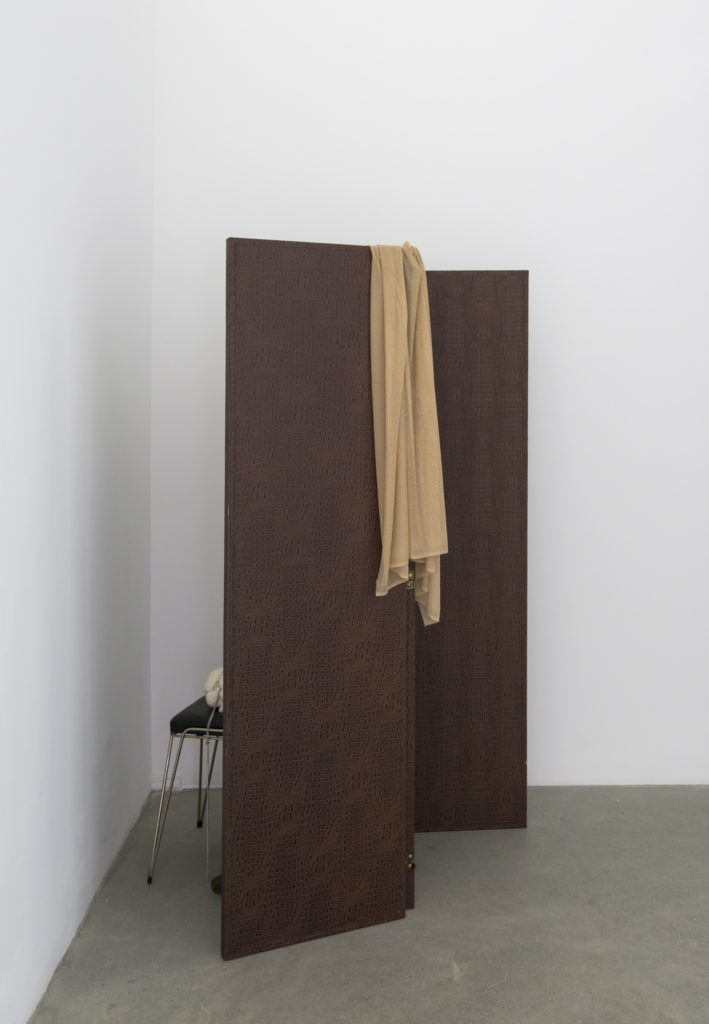
Judy Radul, "Words No Pictures Pictures No Words" (installation view), 2018. Courtesy Catriona Jeffries. Photo: SITE Photography.

Judy Radul, Connector Divider (Hawks, Sparrows, Pigeons, Doves, Ducks, Eagles), 2018. Salvaged glass, aluminum, found ceramic figurines and microphone stands, 2.07 x 2.44 x 5.87 m. Courtesy Catriona Jeffries. Photo: SITE Photography.

Judy Radul, Reading Pavilion for Cover to Cover, 2018. Aluminum, plywood, steel, glass, composite panel, foam, stainless steel chain and two copies of Cover to Cover by Michael Snow (The Press of Nova Scotia College of Art and Design, Halifax and New York University Press, 1975), 2.41 x 2.29 x 4.98 m. Courtesy Catriona Jeffries. Photo: SITE Photography.

Judy Radul, Reading Pavilion for Cover to Cover (detail), 2018. Aluminum, plywood, steel, glass, composite panel, foam, stainless steel chain and two copies of Cover to Cover by Michael Snow (The Press of Nova Scotia College of Art and Design, Halifax and New York University Press, 1975), 2.41 x 2.29 x 4.98 m. Courtesy Catriona Jeffries. Photo: SITE Photography.

Judy Radul, Man’s Hands (Words No Pictures Pictures No Words), 2018. Custom camera-motion control and live-video presentation system, custom made and programmed page-turning machines, two artist magazines, two programmed kinetic sculptures, decommissioned theatre curtain, stools and styrofoam, Dimensions variable. Courtesy Catriona Jeffries. Photo: SITE Photography.

Judy Radul, End of the Autopsy (Three Brains and a Boot – Wombat, Lion, Human), 2018. Ink-jet print on paper, frame, 85 x 56 cm. Courtesy Catriona Jeffries. Photo: SITE Photography.

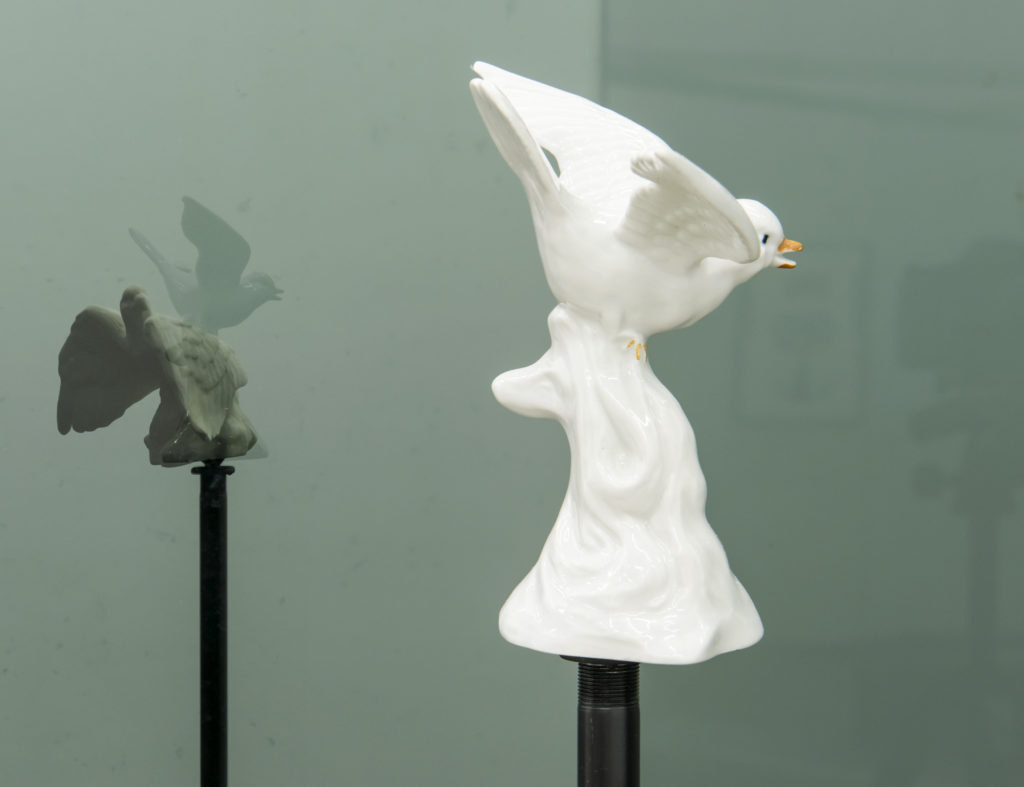 Judy Radul, Connector Divider (Hawks, Sparrows, Pigeons, Doves, Ducks, Eagles) (detail), 2018. Salvaged glass, aluminum, found ceramic figurines and microphone stands, 2.07 x 2.44 x 5.87 m. Courtesy Catriona Jeffries. Photo: SITE Photography.
Judy Radul, Connector Divider (Hawks, Sparrows, Pigeons, Doves, Ducks, Eagles) (detail), 2018. Salvaged glass, aluminum, found ceramic figurines and microphone stands, 2.07 x 2.44 x 5.87 m. Courtesy Catriona Jeffries. Photo: SITE Photography.
